Cards In This Set
| Front | Back |
|
Basic Sponge Body Design
|
Uniquely multicellular body specialized for filter feeding, by separating of suspended food particles from water by passing them through a mesh that strains out the food,Dynamic ameboid movement of cells in tissue and totipotent cells that allow for dynamic change in body structure.This suggests that sponges are an intermediate form between protozoans and other metazoans in which tissues and cells are more permanently specialized.Porous and allows water to pass through body and absorbs food.Sessile and attached organisms, although some have limited movementBody symmetry may be radial (sphere, cone, or cylinder), but asymmetry predominates. Indeterminate Growth
|
|
Asconoid form
|
Is the simplest of the anatomical designs and is a hollow cylinder attached by its base to the substratum. The body surface is covered by a monolayer of flat cells called pinacoderm(platter skin). The hollow interior, the atrium or spongocoel, is lined with a monolayer of plagellated collar cells coalled choanoderm (Collar skin). many small pores known as ostia perforate the cylinder wall.The open end known as the osculum is located at the upper, free end of the body.Aquiferous system: The flagellated choanoderm creates a unidirectional water flow that enters the ostia, passes over the choanoderm en route to the atrium, and exits the osculum. Usually less than 1 mm because this body design does not allow for an increase in the area-volume ratio because the pumping capacity of the choanoderm is limited.
|
|
Syconoid form
|
Increases surface area and reduces atrial volume by forming alternating inpockets and outpockets of the body wall. They outpockets of the choanoderm are called choanogyte chambers. The inpockets of the pinacoderm are incurrent canals, these two are connect with numerous small opening called prosopyles (front gates). aquiferous system: Ostia-incurrent canals-prosopyles-choanocyte chambers-atrium-osculum. Generally larger then asconoid sponges.
|
|
Leuconoid form
|
Largest body sizesAquiferous system is a complex network of water vessels that permeate a solid, spongy body. It consists of spherical choanocyte chambers that lie at the intersection of incurrent and excurrent canals. Small diameter excurrent canals and often multiple oscula replace the relatively voluminous atrium and single osculum of asconoid and syconoid spongesWater enters via surface ostia--incurrent canals--prosopyles into choanocyte chambers--exits choanocyte chambers through apopyle (back gate)--excurrent canals which get progressively larger in diameter as they join with other excurrent canals--exit sponge through one or more oscula. They achieve large body size because water pumping is decentralized.
|
|
Sponge cell types and body cell wall
|
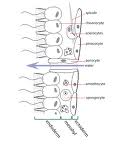 Asconoid sponge |
|
Sponge asexual reproduction
|
Need
|
|
Subphylum Cellularia (Class Calcarea)Leucosolenia
|
Common Asconoid; Free‑living larvae are partly flagellated amphiblastulae; choanocyte nuclei apical; flagellum arises diect ly from nucleus. |
|
Subphylum Cellularia(Class Calcarea) Leucosolenia spicules
|
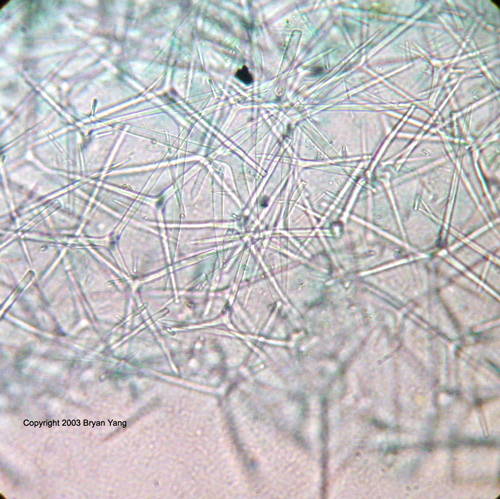 triradiate, quadri radiate and large and small monaxons |
|
Subphylum Cellularia (Class Calcarea)Scypha (Grantia)
|
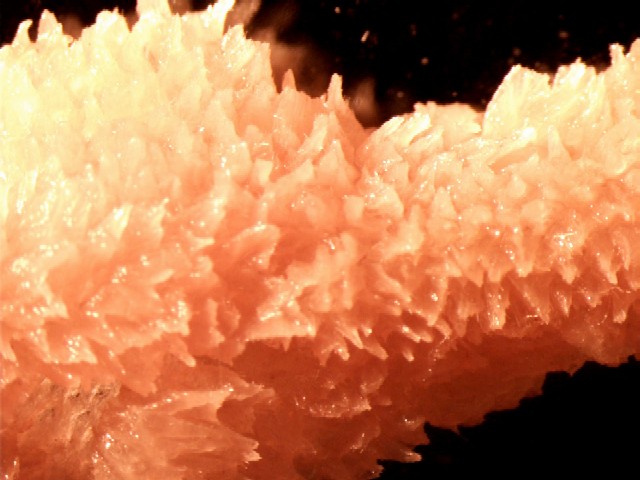 Common syconoid |
|
Scypha (Grantia) under microscope
|
Cross section |
|
Class Calcarea
|
Spicules of mineral skeleton composed entirely of calcium
carbonate laid down as calcite; skeletal elements often not differentiated into
megascleres and microscleres; body with asconoid, synconoid, or leuconoid
construction; all marine.
|
|
Subclass Calcinia(Class Calcarea)
|
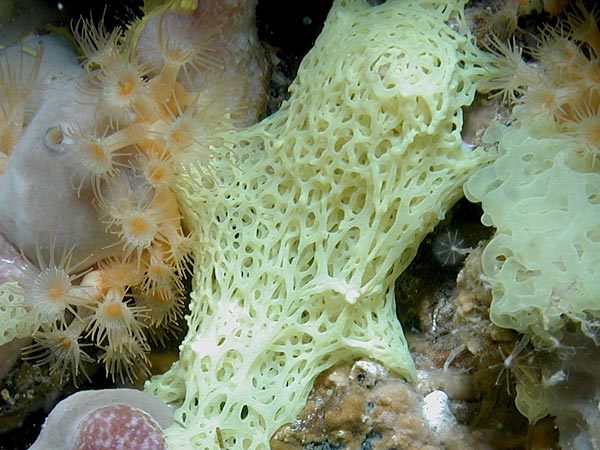 Free‑living larvae are hollow and flagellated, and can become solid parenchymula‑like structures by cellular ingression; choanocyte nuclei located basally; flagellum arises independent of nucleus. |
|
Subclass Calcaronia(Class Calcarea)
|
Free‑living larvae are partly flagellated
amphiblastulae; choanocyte nuclei apical; flagellum arises diect ly from
nucleus
|
|
Class Demospongiae
|
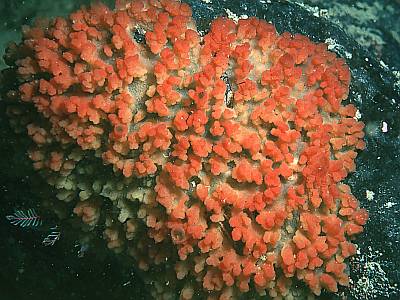 With siliceous spicules; spicule skeleton may be supplemented or re placed by an organic collagenous network ("spongin"); marine, brackish, or freshwater sponges, occurring at all depths |
|
Subphylum Symplasma
|
|



